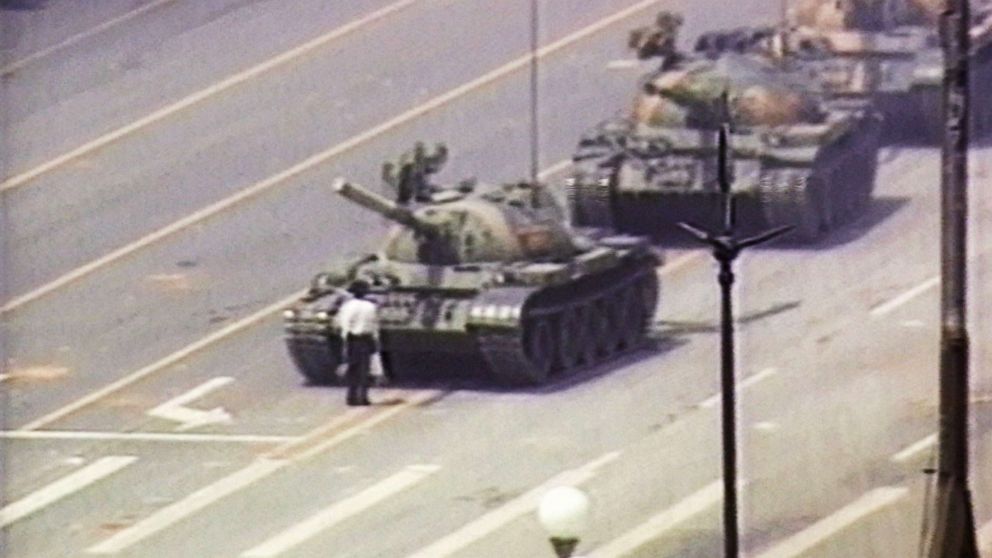


It's an iconic image that defined courage and defiance for a generation around the globe.
But three decades later, little is known about the man who blocked the path of a column tanks in Tiananmen Square in Beijing on June 5, 1989.
Over the years he has come to be known as the "Tank Man," the "Unknown Rebel" or the "Unknown Protester."
Some reports have identified the man as a student, Wang Weilin, but his true identity has not been confirmed. The South Korean news agency Yonhap reported in 2006 that Wang Weilin was an alias and that the man had escaped the massacre in Tiananmen Square and made his way to Taiwan via Hong Kong.
What we do know about him are his actions, captured that day in stunning video footage.
The video shows the man blocking more than a dozen tanks that were rolling down Chang'an Avenue the day after hundreds of student protesters were gunned down by the Chinese military.
The lead tank moves back and forth, trying to go around the man, but the man kept on blocking its path. The man then climbs up on the lead tank and appears to talk to one of the soldiers inside the tank.
The man is eventually led away by his arms by two men. It remains unclear if those men were police or security forces, or just bystanders who were concerned about the man.
Jan Wong, who was a correspondent for the The Globe and Mail, a Toronto newspaper, at the time of the protests, remembered seeing the man confront the tanks and immediately assuming the worst.
"I started to cry because I had seen so much shooting and so many people dying that I was sure this man would get crushed," Wong said in a PBS "Frontline" documentary about the Tank Man that aired in 2009, the 20th anniversary of the protests.
"I remember thinking, 'I can't cry because I can't see; I want to watch this,' but I'm getting really upset because I think he's going to die," Wong told "Frontline."
Another witness, photojournalist Charlie Cole, who was reporting on the protests for Newsweek, said that the man served as something of a symbol of the public's frustrations.
(MORE: From verbal taunts to shots fired: How journalists were attacked in the US in 2018)"I think his action captured peoples' hearts everywhere, and when the moment came, his character defined the moment, rather than the moment defining him," Cole told The New York Times in 2009.
"He made the image. I was just one of the photographers. And I felt honored to be there," Cole said.
In April 1998, Time magazine included the "Unknown Rebel" in a feature titled "Time 100: The Most Important People of the Century."
The magazine later included photographer Jeff Widener's photograph of the showdown among the "Time 100: The Most Influential Images of All Time," which was published in November 2016.
Editor's Note: This article was originally published on June 3, 2014, and has since been updated.